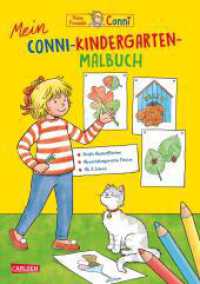- ホーム
- > 洋書
- > 英文書
- > Nature / Ecology
Full Description
Mixed crop-livestock systems offer promising strategies for sustainable farming. Innovations for Sustainable Agriculture: From Lab to Farm to Table details solutions for mitigating agricultural waste, such as carbon emissions and chemical runoff, and creating a circular economy on mixed farms. In addition to covering potential solutions, the book will analyze the effectiveness of each strategy in protecting the environment from harm. Notable topics covered include manure management, agricultural waste valorization, wastewater and resource recovery, and even dairy cow feed for lowering methane production.
While the book is based primarily on the climates and farming systems of Europe, the climactic diversity of the continent will make this a useful resource for many other parts of the world with similar climates, including North America and portions of South America, Asia, and Oceana. Innovations for Sustainable Agriculture: From Lab to Farm to Table offers practical strategies and solutions to readers and will benefit audience members ranging from students and researchers to farmers and agricultural stakeholders.
Contents
Section 1: Systemic approach of mixed crop-livestock production (for adaptation to climate change)
1. Circularity in mixed crop-livestock production - a priority for sustainable development
2. Feeding dairy cows - a key tool for reducing greenhouse gas emissions
3. Methods and techniques in manure management to reduce GHG emissions
Section 2: Solutions to increase Nutrient and Carbon circularity
4. Prevention pollution caused the nutrient leaching from agricultural non-point sources
5. Waste management in mixed farming systems: valorization of agricultural waste to increase nutrient and carbon circularity
6. Sustainable livestock wastewater management: resource recovery in the context of the circular bioeconomy
Section 3: Decision support platform and ICT solutions
7. Data-driven decision support in mixed farming systems: Overview and challenges
8. Design of a decision support platform for mixed farming systems
Section 4: Pilot deployment and testing
9. Systems to reduce GHG emissions (in crop and animal sectors) across various climatic regions of Europe
10. Production of fertilizers from agricultural waste - circularity improvement and reduce GHG emissions
11. Mixed crop and livestock farming opportunities - integration of animal and plant production into the circular agri-food system
Section 5: Evaluation of circular approaches with LCA (Life Cycle Assessment)
12. Strengths and limitations of LCA in representing mixed crops and livestock farming systems
13. LCA framework to evaluate the footprint of linear vs. circular systems
14. Case studies: Footprint results
Section 6: Evaluation of circular approaches using agroecological and socioeconomic analysis.
15. Agroecological strengths and limitations of the circular approach in mixed crops and livestock farming systems.
16. Socio-economic analysis of circular approach in mixed crops and livestock farming systems
-

- 電子書籍
- KOIの病は治らない! 8
-

- 電子書籍
- 社会主義と経済学






